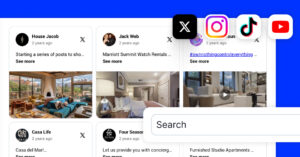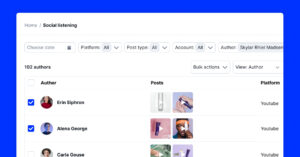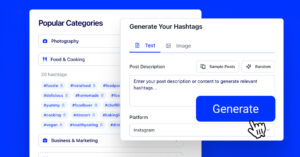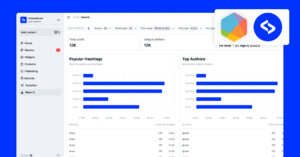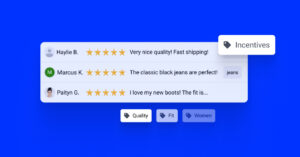UGC stands for “User Generated Content.” It refers to content—videos, photos, text, reviews, etc.—created by users (or the general public) rather than professional content creators or brands. UGC has become increasingly prevalent with the rise of social media platforms like Facebook, Instagram, Twitter, YouTube, and TikTok.
UGC meaning
User-Generated Content (UGC) is content created by your customers, not your marketing team. It can include:
- A selfie featuring your product
- A TikTok review or unboxing
- A tagged post using your branded hashtag
- A 5-star review on your website
- A Reddit thread about your service
This content is unsolicited, authentic, and often more persuasive than branded content. Through UGC discovery, brands can collect and track this content using social listening tools to power more relatable and effective marketing.
Why is UGC important?
UGC is the backbone of social proof and social commerce strategies. Here’s why leading brands rely on it:
- It builds trust – potential customers are more likely to believe peers than polished ads
- It increases engagement – people are more likely to interact with content that features real people
- It drives conversions, especially when turned into shoppable UGC
- It reduces content production costs
- It supports real-time marketing during product launches, events, and seasonal campaigns
UGC isn’t just about content—it’s about community. Featuring your customers’ voices helps create a two-way relationship between brand and audience.
What are the types of UGC?
User-generated content appears in many formats across multiple platforms. Common types include:
Social media photos and videos
Instagram Reels, TikTok videos, and Facebook posts showing real customers using or reviewing products. These are typically discovered through hashtag tracking and social media mentions.
Customer reviews and ratings
Written reviews on e-commerce platforms, star ratings, and comments that show how satisfied users are. These also support SEO and influence purchasing decisions.
Testimonials and interviews
Structured feedback, often shared on landing pages, case studies, or YouTube, that describes how a product helped solve a real problem.
Influencer endorsements
When influencers or creators authentically mention or recommend your product as part of influencer campaigns, it becomes a hybrid of UGC and branded content.
Blog posts or product comparisons
Long-form reviews, usually created by customers or niche experts, offering in-depth perspectives that build credibility and drive traffic.
Forum and group recommendations
Posts in Facebook Groups, Reddit, or Quora threads where customers share advice, tag brands, or provide product comparisons—often discovered through keyword tracking.
How to use UGC effectively
Discover the content already being created
Use UGC discovery tools to find organic posts, reviews, or mentions across platforms. Social listening helps you filter and surface the most relevant content.
Secure UGC usage rights
Before using any customer content in ads, emails, or websites, make sure to request and manage UGC usage rights. This ensures compliance, transparency, and trust.
Make content shoppable
Turn UGC into conversions with shoppable UGC. Tools like EmbedSocial let you tag products inside UGC and embed them into your Shopify store, landing pages, or product galleries.
Integrate UGC across channels
Use content in email campaigns, paid social ads, influencer pages, and product pages. Combine it with sentiment analysis and social media content analytics to track what performs best.
Why UGC supports social listening
UGC isn’t just for content—it’s a data source. By tracking UGC, brands can:
- Improve your share of voice (SOV) by boosting positive, real content
- Understand brand perception through sentiment analysis
- Monitor product feedback across regions and languages
- Identify volume spikes and emerging trends
- Discover new influencer partnerships organically



